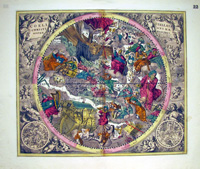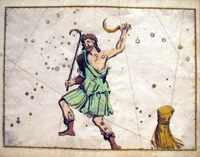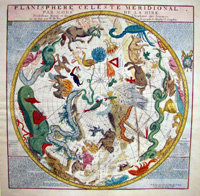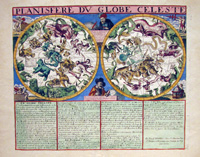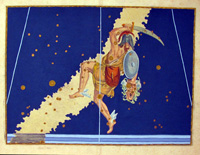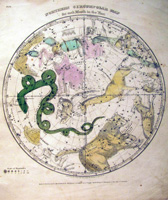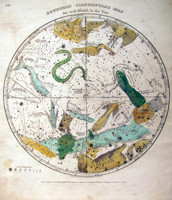|
Johann Bayer - The Man Who Invented The Modern Celestial Constellations At the end of the sixteenth century, a young German named Johann Bayer moved to Augsburg for the purpose of practicing law, a university degree he had studied. But like so many other scholars of the moment, the heavens inevitably attracted him. Astronomy was the science of the moment, and the scholar was obsessed with the precise position of objects with respect to the terrestrial sphere. Years later Bayer would revolutionize this field of knowledge by creating the star atlas that gives a name to all constellations as we know them today. The wolf, the vessel, the Phoenix, the turkey ... Yes, a good part of the astronomical nomenclature that we use today emanates from the Uranometria Omnium Asterismorum, the study of Bayer on those skies and from which the Library now releases high-resolution images of the United States Naval Observatory, of a copy found in 1655. The important thing of his work is that it covered absolutely all the sky observable from the earth in a natural way, not only the constellations visible from concrete points of the earth, as they did before that he the Greeks. Although today it is rather poor to see a drawing on the placement of stars, the discovery in the seventeenth century was something sensational, something like the closest to Google Maps of the time in the West. Thanks to Bayer, people from all over the world knew what the starry night looked like in Bangkok and Algeciras in a hyper-precise way. Oh well, at least everything that was believed to be until the arrival of Nicolas Louis de Lacaille 150 years later. From a decontextualized perspective, what attracts the most attention in these attractive images is the incredible imagination that the Germans must have in order to assign these forms to these asterisms that, let's be honest, do not resemble almost anything to the form that gives them their name. If we thought that El Carro already had a somewhat questionable outline, in these designs we see how some of the forms are quite peregrine (although yes, very nice). Another added advantage: when discovering these images, those who want to tattoo their zodiac sign or the constellation that has influenced their birth may request that they draw on their skin an exact reproduction of the original appearance of their sign. We already feel for those who are Leo, may your cat has not come out too favored.
|


